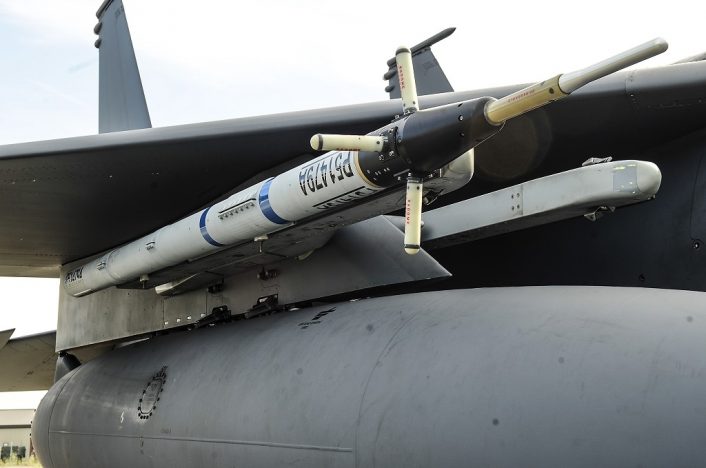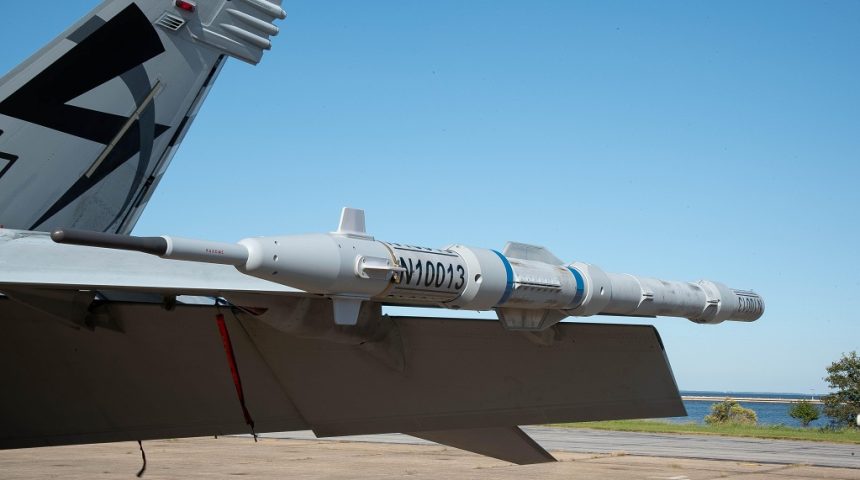The New Tactical Combat Training System (TCTS) Increment II ACMI pod will replace the current TCTS/P5CTS pod used for training by Navy, Marines and Air Force.
NAVAIR (Naval Air Systems Command) recently announced that the Naval Aviation Training System and Ranges program office completed on November 6, 2020 the initial tests on a next-generation Air Combat Maneuvering Instrumentation (ACMI) training system, called Tactical Combat Training System Increment II (TCTS II). The tests were conducted on an F/A-18E/F Super Hornet of Air Test and Evaluation Squadron (VX) 23 at Naval Air Station Patuxent River.
Traditionally, air combat training included a mix of live and simulated range training missions to prepare aircrews for real world combat. As technology, adversaries and threats evolved, training requirement for modern combat scenarios changed in turn, so the U.S. Navy and Marine Corps inquired the industries to find innovative methods that could revolutionize the way air combat training is conducted while also improving integrated training readiness at the same time.
The result is the TCTS II system developed by Collins Aerospace and Leonardo DRS, an evolution of the TCTS initially developed by Cubic. The initial TCTS pod featured real-time weapons simulations and live monitoring functions for air-to-air, air-to-ground and surface-to-air missions, with Real-Time Kill Notification (RTKN), No Drop Weapons Scoring (NDWS) and Electronic Warfare simulation capabilities. The new TCTS II pod integrates all the features of the previous pod in an open architecture system that represents the first certified encrypted, Multiple Independent Levels of Security (MILS) training equipment in both airborne and ground equipment.
Like the TCTS, the new pod maintains the same form factor of the Sidewinder air-to-air missile, using the AIM-9’s and AIM-120’s connectors to interface with the aircraft. While not confirmed, the pod should be using an Inertial Measurement Unit (IMU), GPS and Solid-State Recorder (SSR) similar to its predecessor, while the datalink should be a new one, as demonstrated by the new antennas on the pod. The F-35 Lightning II will have its own internally mounted variant of the system.

Another feature of the TCTS II pod is the Synthetic Inject to Live (SITL) capability, featuring full-fidelity threat and weapon simulations, that enables live, blended with synthetic real-time air combat training with both real and simulated weapons and electronic warfare tactics, in order to more realistically emulate contested/congested environments during scalable training exercises, with the added possibility to connect TCTS II-equipped ranges across the entire country to create a “super range” or a common training battlespace to prepare warfighters for the future of Joint All Domain C2 (JADC2). This concept is similar to the Live, Virtual and Constructive (LVC) training currently implemented in new generation trainers like the Leonardo M-346.
Earlier this year, the U.S. Air Force joined the TCTS II program to leverage investments made by the Navy and delivery training capabilities sooner and at a lower cost, starting the development of its pod under the name P6 Combat Training System, similarly to the previous TCTS pod that was called P5 Combat Training System by the Air Force (AN/ASQ-T50 in the official designation).
The two services will work together to use this system with full interoperability to train in real-world environments with real-world threats. While a timeline for the Navy has not been disclosed, the system is expected to be fielded by the Air Force in 2022/2023.









